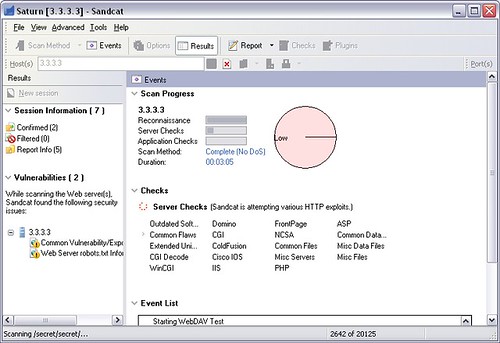Sandcat allows web administrators to perform aggressive and comprehensive scans of an organization’s web server to isolate vulnerabilities and identify security holes.
The Sandcat scanner requires basic inputs such as host names, start URLs and port numbers to scan a complete web site and test all the web applications for security vulnerabilities.
This is a pretty nifty and complete tool, there is a ‘pro’ version available too.

- Provides over 260 web application security checks, covering over 38 types of web security attacks — a target server can be local or remote
- Crawls web sites and detects cross-site scripting, directory transversal problems, attempts to execute commands and multiple other attacks
- Scans web servers for the SANS Top Twenty (C1), the OWASP Top 10 and the OWASP PHP Top 5 vulnerabilities
- Allows to scan for specific vulnerabilities, such as Fault Injection, SQL Injection and XSS (Cross-Site Scripting) vulnerabilities
- Allows to define a range or list of IP addresses to be scanned
- Allows to define multiple start URLs
- Allows to perform destructive and non-destructive scans
- Allows to edit the crawling depth: maximum number of links per server, maximum links per page, maximum URL length and maximum response size and more
- Allows to create user signatures for detecting application vulnerabilities
- Prevents logout
- Tests intrusion detection systems
- Exploits AJAX-based web applications
- Supports host authentication (basic and web form authentication)
- Supports OSVDB, NVD, CVE and CWE
- Stores and allows you to view the HTTP request and response for each successful test
- Automatically discovers and analyzes the server’s configuration to determine which tests are needed
- Analyzes robots.txt file and javascript
- Includes a Baseline Security Scanner — ensures security against outdated server software
Download (EXE-Installer)
Download PDF Manual
Downloads Page.
Windows only I’m afraid.





0 comments:
Post a Comment